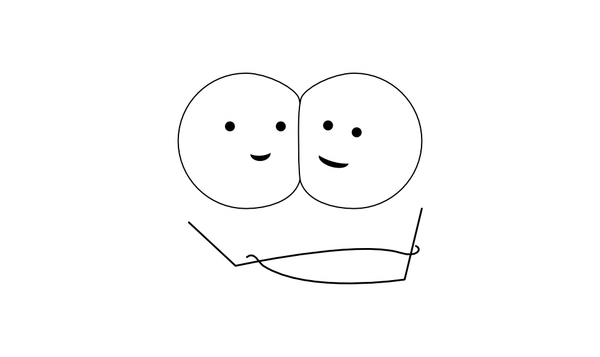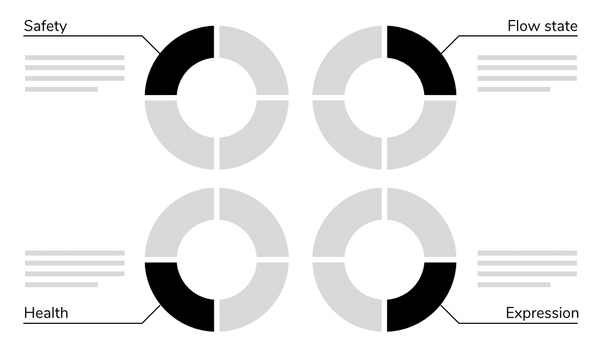Garbage in, garbage out

Our ongoing formulation of what-is truth
Truth is hard. It’s ultimately a binary state attributed to a complex compilation and interpretation of a set of data and information. It’s leveraged as a springboard into decision making, cultural norms, and even society-level agreements.
It is a characteristic that is bandied about with great flair, emphasis, and passion. It’s also dependent on information, which can be adhering to reality, or a confabulation of cognitive bias, storytelling, and/or shaky memory. It can have within its construction misapprehension, misguided facts, misinformation, and even disinformation (lies) predicated on manipulation – information can be polluted and poisoned.
And because "truth" a simplified construct of a complex amalgamation of data and information, one person’s "truth" can be another person’s falsehood. The perception of truth and falsehood can both be right based on that amalgamation, plus the varying priorities and insights. The varying degrees of right/wrong/mixed etc., are so vast that the binary truth/falsehood in our current formulation leading to trustlessness.
We conflate narrative and perceptual truth with the quality of truth. We have one word to encompass all the states. They are all useful in honing in. But we're seriously missing the point in calling an insight a truth too quickly, too aggressively, and with unbending certainty that anyone else's is patently false instead of an indication that we need to work harder. It's not that we need to get to the playground first to control the space and define the game; that doesn't work long term. What works long term – what helps us as a species – is honing in on quality truth.
Scientific methodology provides a framework for testing for truth: replicate, through multiple people with their perceptions and cognitive biases, to see if the outcome is the same; and triangulate through multiple approaches to test the replicated outcomes. Scientific method acknowledges that, no matter how robust the critical thinking, if others can’t replicate the test, the finding isn’t true. The finding passed the test of perception and narrative truth, but didn’t meet the quality of truth. It did not manage to adhere to reality.
The shaky bit is that scientific methodology can still be skewed by cognitive bias. It is subject to the people defining the test and writing it up. They can leave out certain aspects of the outcomes as ‘irrelevant’ or ‘junk data’ as they document their experiment, data, and interpretations for others to replicate. They can focus too tightly on what they thought was the keys to understanding, and it can be off. Bad science happens, it's part of why scientific method built in replication. If it's built on a test or question that is leading, or caught up at a fundamental level to test for a too-narrow finding or too-narrow answer, it's more likely to come to light as more minds are approaching it with critical thinking.
Example: perceptual truth
“Are eyes brown”, only looking for brown eyes, will have a universal acceptance. “Are eyes only brown”, looking for all the potential color of eyes, will quickly fail replication.
“Are eyes in all vertebrate animals only brown with circular pupils”, broadening the population beyond the implicit human form factor in the first two suppositions, will again quickly fail.
Asking the wrong question, or a question in a way that skews, is a known quality in the formation of scientific study, and yet it can still be a point of fumbling.
We need to observe, study, and test from multiple points of view. It is not enough to acknowledge that eyes are brown, or that eyes can be more than brown, or that eyes are present in more species than just homo sapiens. Any information or pattern that eyes encompass and are adjacent to are relevant to incorporate as we develop questions around eyes.
It’s only after testing against multiple conditions, from multiple points of view, over and across time, set within multiple environments, and acknowledge the vast array of spectrum modalities that can be encompassed by the ‘eye’ construct that we can get to the truth of them.
The quality of truth for eyes is not brown-ness, because eyes can exist that do not have brown irises. It’s not circular pupils, because eyes can exist that do not have circular pupils — or even pupils, period. It’s not even sight, because eyes exist that don’t transmit visual information to the brain.
Even in a world where the accepted truth is that eyes see, eyes will still be born without function, or lose function through time or accident. Functioning eyes will still see different qualities in the visual spectrum based on their construct, variable across species.
The truth of eyes is that they are the physical manifestation of the possibility to include visual information. Everything we know about eyes after that are permutations of the truth, predicated on perception and narrative.
Narrative truth
Because of the fuzzy nature of our language around the idea of “truth”, the word can be used to reference what is strongly held opinion of a lower-strata facet of reality. Someone can literally stand on a metaphorical hill to state, loudly, that any construct that does not see cannot be an eye.
They can even violently control the information being gathered, to pre-define their narrative summation as the only possible way to interpret the data. It's as simple as destroying any eyes that cannot see. They can even go deeper: destroy any eyes that show signs of not seeing to the full degree expected. The data will show, conclusively, that all eyes see; that in fact, all eyes show no signs of possibly not seeing in the future.
Removing all the data that states otherwise is a way to force data to reflect a wish state. It does not change reality. It does not change the quality of truth. It is gaslighting, on a massive scale. It is incorporating garbage-in by simply not accepting that what doesn’t meet their outcome.
It changes the question and the test, the accepted definition of truth, and introduces new and alternative states of story. It is fundamentally, informationally violent.
Focusing on the narrative of truth, combined with anger and violence, is a key tool to alter the perception of truth. However, reality is a state that won’t budge. Eventually the exceptions will bubble up, despite the tightest control.
Quality of truth
It is only by adhering to the fulsomeness of reality, unaltered by manipulation, that we get to the quality of truth. The quality of truth is rarified. The perception of truth is an every-minute occurrence. The narrative of truth shapes our perceptions, and can lead to the quality of truth, or the failure of our adherence to reality.
The above descriptions are only examples. There are far, far more ways to skew data and information to skew the label of truth. Bad actors exist who are so interested in defining truth for others – as far away from quality truth as possible – that there can't be a definitive list of all the possible ways it can be done. It's up to all of us to learn information literacy, invoke agency, and work around the bad actors.
Find patterns. Think critically. Replicate findings and epiphanies with others, as broadly and diversely as possible. Pay attention to willful and unwitting leading. Triangulate. Learn to recognize and ignore/shun/remove the bad actors from the information mix.
To find peace in the world, adhere to reality instead of narrative. For in the end we are information beings; and where garbage goes into our information, garbage comes out.
Calls: bad actors, cognitive bias, environment, excluded, juxtaposition, memory, ouruborus, reality adhesion, story
Sends: bet, bottom-up, cognitive IA, connectome, context, encap long, environment, fantasy, hierarchy from network, human nature, keeping network, learning, metadata, navigation, network gen, network overview, perspective lens, perspective network, reductionism, ripen, simplifying, strata, strata longform, system expand/contract, systems flow, taxonomy
Springboards
Allain, R. (2013, April 1). What’s Wrong With the Scientific Method? Wired.
Bhandari, P. (2023, June 22). Triangualtion in Research | Guides, Types, Examples. Scribber.
Brian Hepburn, H. A. (2021, June 1). Scientific Method. Stanford Encyclopedia of Philosophy.
Defining critical thinking. Criticalthinking.org.
Ellerton, P. (2016, September 14). What exactly is the scientific method and why do so many people get it wrong? The Conversation.
Grant, A. (2023). Think again: The power of knowing what you don’t know. Penguin.
Hitchcock, D. (2024). Critical Thinking. In E. N. Zalta & U. Nodelman (Eds.), The Stanford Encyclopedia of Philosophy (Summer 2024). Metaphysics Research Lab, Stanford University.
How To Spot Bad Science. Farnum Street.
Conroy, G. (2019, December 10). The 7 deadly sins of research: The most common stumbling blocks. Nature.com.
Oreskes, N. (2021, July 1). If you say “science is right,” you’re wrong. Scientific American.
Oreskes, N. (2021b, August 1). Why bad science is sometimes more appealing than good science. Scientific American.
Novella, S. (2012). Your Deceptive Mind: A Scientific Guide to Critical Thinking Skills. Teaching Company.
Pinker, S. (2019). Enlightenment now: The case for reason, science, humanism, and progress. Penguin.
Sagan, C. (2011). Demon-haunted world: Science as a candle in the dark. Ballantine Books.
Taleb, N. N. (2013). Antifragile: Things that gain from disorder. Penguin Books.
Triangulation in qualitative research: A comprehensive guide [2025]. Looppanel.com.
Webb, N. G. (2017). Survey: Leading Questions. In The SAGE Encyclopedia of Communication Research Methods. SAGE Publications, Inc. https://doi.org/10.4135/9781483381411.n605.
Wikipedia contributors. Scientific method. Wikipedia, The Free Encyclopedia.
Wright, D., & Meadows, D. H. H. (2012). Thinking in Systems: A Primer. Routledge. https://doi.org/10.4324/9781849773386


